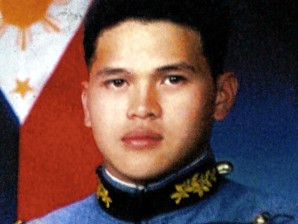Expert insists Pestaño death was suicide
A forensic expert who investigated the death of Navy Ensign Philip Pestaño aboard a Navy ship in 1995 said that the officer’s family had “twisted the facts to suit their conclusion” that Pestaño had been murdered.
Forensic pathologist Dr. Raquel del Rosario-Fortun said she stood by her findings in 1995 after she was hired by the Pestaños to review the official findings—that Pestaño had shot himself inside his cabin aboard the BRP Bacolod City on Sept. 27, 1995.
The Pestaños had disputed Fortun’s claim.
Reversing a 2009 decision by her predecessor, Merceditas Gutierrez, Ombudsman Conchita Carpio-Morales in a resolution last January 10 ordered that 10 Navy officers and enlisted personnel be charged with murder without bail in Pestaño’s death.
“I’ve been consistent since 1995,” Fortun said when interviewed last Thursday at the University of the Philippines College of Medicine where she is a professor at the Department of Pathology.
Article continues after this advertisement“I said the evidence pointed to a suicide. And I’m (still) saying the same thing. There’s nothing new that has come up. It’s the same. It’s just that they are now twisting the interpretation of the findings,” she said.
Article continues after this advertisementWhen she gave her report, she said Pestanos’ parents Felipe and Evelyn rejected it because “they already had a conclusion,” and that she was retained “to prove that it was not a suicide.”
She said the Ombudsman did not cite any new evidence but rehashed the interpretation given by an American “expert” hired by the Pestaño family “to say what they want to hear.”
The Ombudsman mainly relied on the opinion of Wayne Hill Sr., an American self-proclaimed forensic specialist who advertises his services on the Internet.
Fortun, who has kept a file folder on the Pestaño case, said the facts were “misinterpreted” by Hill who she said was not a forensic pathologist.
She said the Ombudsman used Hill’s claim that the contusion on Pestaño’s head was caused by a blunt object and a laceration in his left ear indicated foul play.
But according to Fortun, the two contusions that were a centimeter from the bullet hole and the ear laceration were related to the gunshot wound.
“Based on the mechanisms of how a bullet destroys tissue, (the contusion is) what is called a muzzle imprint. And then the injury near the (bullet) exit near the ear, that is what you call a laceration that is probably from the gases of the bullet exit,” Fortun said.
But the lawyer of the Pestaño family on Monday disputed Fortun’s claim, saying that the 1997 Senate investigation into Pestaño’s death discredited Fortun’s testimony on behalf of the Philippine Navy.
“If you look at the Senate committee report, she was discredited as an expert witness of the Philippine Navy. She admitted that at the time she did not have enough experience in examining cases similar to Philip’s case,” lawyer Romel Bagares said in an interview.
Bagares said Fortun had tried to make it appear that she was a “superwoman forensic expert” knowledgeable in fields like ballistics and hand-writing when she was not.
Against Fortun’s lone testimony, Bagares said, four medico legal experts and two ballistics experts trained by the US Federal Bureau of Investigation agreed that Pestaño’s death was not a suicide.
“All of these experts agreed that there was foul play,” Bagares said.
If you or someone you know is in need of assistance, please reach out to the National Center for Mental Health (NCMH). Their crisis hotlines are available at 1553 (Luzon-wide landline toll-free), 0917-899-USAP (8727), 0966-351-4518, and 0908-639-2672. For more information, visit their website: (https://doh.gov.ph/NCMH-Crisis-Hotline)
Alternatively, you can contact Hopeline PH at the following numbers: 0917-5584673, 0918-8734673, 88044673. Additional resources are available at ngf-mindstrong.org, or connect with them on Facebook at Hopeline PH.
